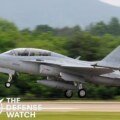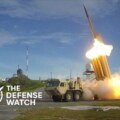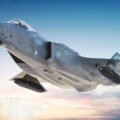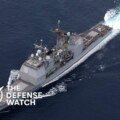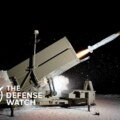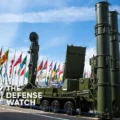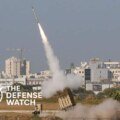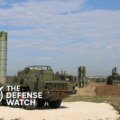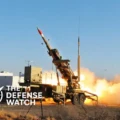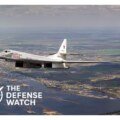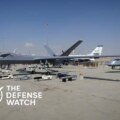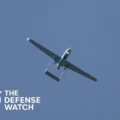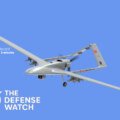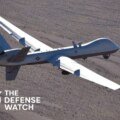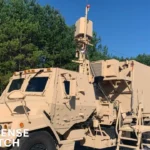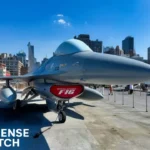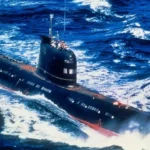- Home
- Catalog
- Fighter Jets
- F-16 Fighting Falcon Fighter Jet
F-16 Fighting Falcon Fighter Jet







Full Specifications
General Information
| Name | F-16 Fighting Falcon |
| Manufacturer | General Dynamics / Lockheed Martin |
| Country of Origin | United States |
| Type / Role | Multirole Fighter |
| Generation | 4th |
| Status | Active / In Service |
| First Flight | January 20, 1974 |
| Introduction / In Service Since | 1978 |
| Number Built | Over 4,600 |
| Operators | USA, Israel, Turkey, Greece, South Korea, etc. |
Dimensions & Structure
| Length | 49 ft 5 in (15.06 m) |
| Wingspan | 32 ft 8 in (9.96 m) |
| Height | 16 ft 8 in (5.09 m) |
| Wing Area | 300 sq ft (27.87 m²) |
| Empty Weight | 18,900 lb (8,573 kg) |
| Maximum Takeoff Weight (MTOW) | 42,300 lb (19,187 kg) |
| Internal Weapons Bay | None |
| External Hardpoints | 9 |
Performance
| Maximum Speed | Mach 2.0 |
| Range | 2,620 mi (4,220 km) with drop tanks |
| Combat Radius | ~500 mi (800 km) |
| Service Ceiling | 50,000 ft (15,240 m) |
| Rate of Climb | 50,000 ft/min |
| Thrust-to-Weight Ratio | 1.095 |
| G Limits | +9 / -3 |
Powerplant
| Engine Type | Pratt & Whitney F100-PW-229 / GE F110-GE-129 |
| No. of Engines | 1 |
| Thrust (each) | 29,000 lbf (afterburner) |
| Thrust Vectoring | No |
| Fuel Capacity | 7,000 lb internal |
Armament
| Gun | 1× M61A1 20mm Vulcan |
| Missiles (Air-to-Air) | AIM-9, AIM-120 |
| Missiles (Air-to-Ground) | AGM-65, AGM-88 |
| Bombs | JDAM, Paveway, Cluster bombs |
| Hardpoints | 9 |
| Payload Capacity | 17,000 lb (7,700 kg) |
Avionics & Systems
| Radar | AN/APG-68 / AN/APG-83 AESA |
| Radar Range | ~160 km |
| Electronic Warfare (EW) System | AN/ALQ-213, ALQ-131 |
| Targeting System | Sniper XR / LANTIRN |
| Helmet Display | JHMCS |
| Navigation | GPS/INS |
| Autopilot / AI Assistance | Digital Fly-by-Wire |
| Communication | Link 16, Secure UHF/VHF |
Stealth & Technology
| Radar Cross Section (RCS) | ~1.2 m² |
| Stealth Features | Limited shaping, radar-absorbent coatings |
| Infrared Signature Reduction | Moderate |
| Sensor Fusion | Partial (F-16V upgrade) |
| Networking Capabilities | Link 16, Joint operations compatible |
Variants
| Special Export Versions | F-16I (Israel), KF-16 (South Korea) |
Operational History
| Major Conflicts / Deployments | Gulf War, Kosovo, Iraq, Afghanistan |
| Notable Operators | USAF, Israel, Turkey, Taiwan, UAE |
| Combat Proven? | Yes |
| Mission Types | Air superiority, strike, SEAD, CAS |
Cost & Program
| Unit Cost | ~$35 million (Block 70) |
| Development Cost | ~$8 billion (program total) |
| Program Name | Lightweight Fighter (LWF) |
| Funding Countries | United States, NATO partners |
Additional Information
| Upgrades Planned | AESA radar, datalink, EW suite |
| Future Replacement | F-35A Lightning II |
| Export Restrictions | Controlled under ITAR |
| Notable Achievements | Most exported Western fighter |
| Competitors | JAS 39 Gripen, MiG-29, Mirage 2000 |
PROS
- Exceptional agility and maneuverability
- Proven combat record and reliability
- Wide global logistics and maintenance network
- Cost-effective multirole capability
- Ongoing modernization through F-16V upgrades
CONS
- Limited stealth capability
- Single-engine vulnerability
- Shorter range compared to twin-engine fighters
- Aging airframes in early variants
- Outclassed by newer fifth-generation aircraft
F-16 Fighting Falcon: America’s Agile Multirole Fighter
The F-16 Fighting Falcon, often called the “Viper” by its pilots, is one of the most successful and widely operated fighter jets in history. Developed by General Dynamics (now Lockheed Martin) for the U.S. Air Force, the F-16 first flew in 1974 and entered service in 1978. Designed as a lightweight, high-performance fighter, it quickly evolved into a versatile multirole aircraft capable of both air-to-air combat and air-to-ground strike missions.
Design and Capabilities
Built around the concept of agility and cost-efficiency, the F-16 features a frameless bubble canopy for enhanced visibility, a side-mounted control stick for precise handling, and a fly-by-wire control system—one of the first of its kind. Powered by a single Pratt & Whitney F100 or GE F110 turbofan engine, the F-16 can reach speeds exceeding Mach 2 and perform at altitudes up to 50,000 feet.
The aircraft’s combat radius of over 500 miles, combined with advanced avionics such as the AN/APG-83 AESA radar, enables superior situational awareness and multi-target engagement. The F-16 can carry a wide range of ordnance, including AIM-9 Sidewinder, AIM-120 AMRAAM, and precision-guided bombs like JDAMs.
Global Impact
More than 4,600 units have been produced, with the F-16 serving in over 25 nations worldwide. It has been combat-proven in multiple conflicts, from Operation Desert Storm to missions over Afghanistan and the Balkans. Continually upgraded through programs like the F-16V (Viper) modernization, the Falcon remains a backbone of Western and allied airpower well into the 21st century.
Reviews
Disclaimer Note
The information provided on TheDefenseWatch.com is for general informational purposes only. While we strive to ensure the accuracy, completeness, and timeliness of our content regarding defense and aerospace products, technologies, and specifications, we cannot guarantee that all information is 100% accurate or up-to-date due to the evolving nature of military technology and classified data. TheDefenseWatch.com does not warrant the reliability, suitability, or availability of the information for any specific purpose. Users are advised to consult official sources, such as manufacturers, government publications, or defense agencies, for precise and verified data before making decisions based on our content. We are not affiliated with any defense manufacturers, governments, or military organizations mentioned. Opinions, reviews, and ratings reflect expert analysis but are subjective and should not be considered endorsements. TheDefenseWatch.com is not responsible for any errors, omissions, or consequences arising from the use of this website’s content. External links are provided for convenience and do not imply endorsement. TheDefenseWatch.com reserves the right to update or modify content without prior notice. By using this website, you agree to our Privacy & Cookies Policy.

